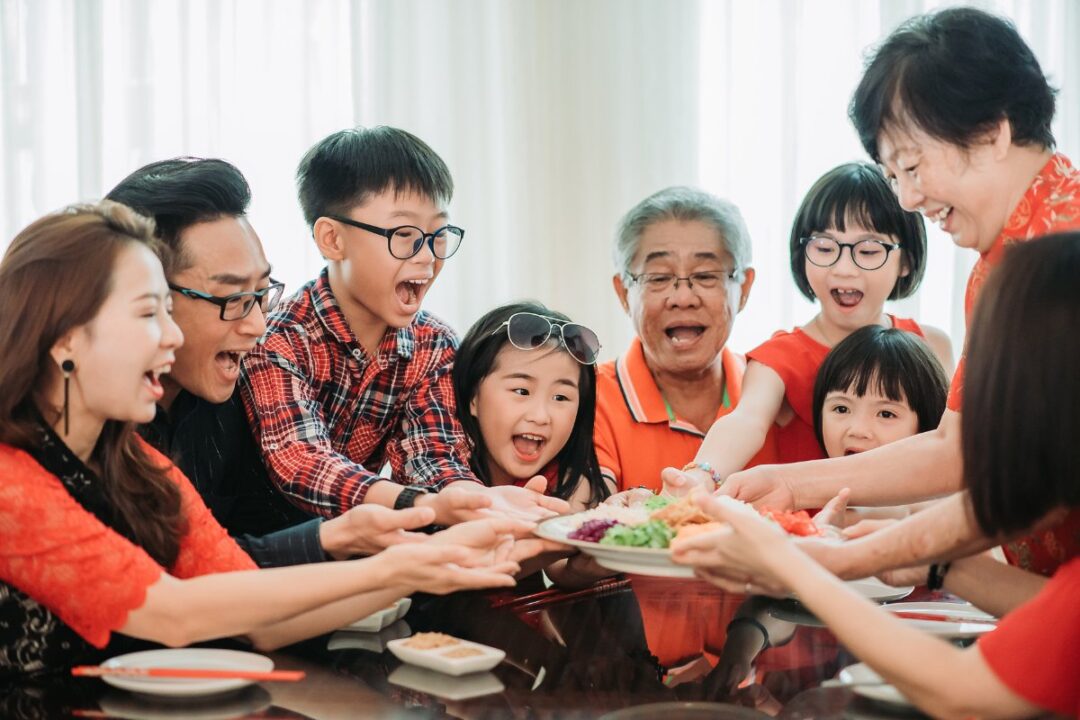Chinese New Year marks a new beginning and is all about gathering with friends and family to welcome the new year. It falls on February 10 this year and is a 15-day festival that ends on the Lantern Festival. While reuniting with our loved ones, one of the main centrepieces of every table is food. Lunar New Year meals entails a feast of sorts, like nin gou and cakes, and these snacks and meals are eaten for auspicious reasons to up the luck factor. See which dishes to prepare when hosting a gathering or what to expect when visiting families during the joyous season.
Braised dried oyster with black moss (蠔豉與髮菜)
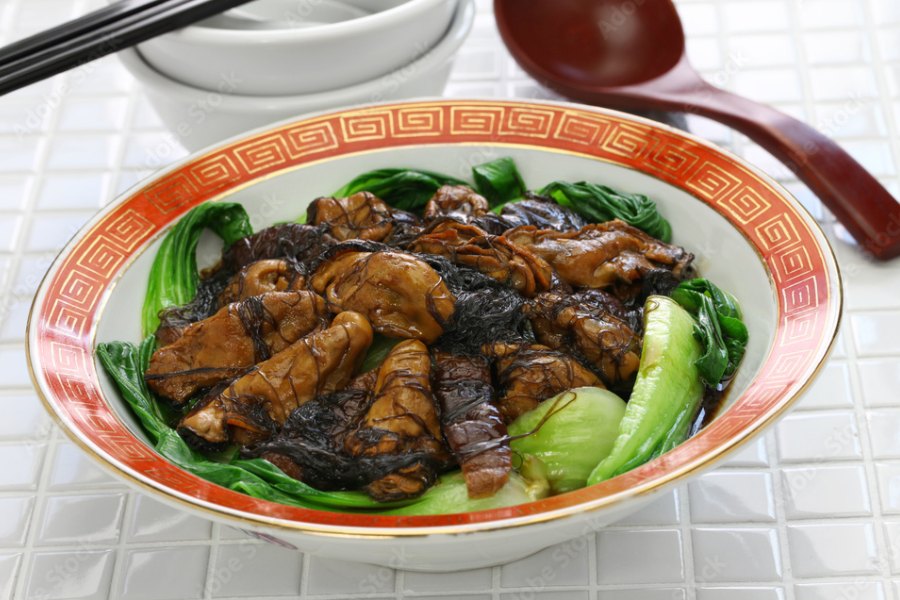
Want to head into the new year blessed with prosperity and good fortune? Making a debut during the festival is braised dried oysters with iconic hair-like black moss (faat choi hou si). This speciality Chinese New Year cuisine is auspiciously known to bring great things and abundance (發財好市). Dried oysters sound like “great markets” (好市) when pronounced in Cantonese, while black moss, also known as hair vegetable, sounds like “be prosperous” (發財). Both ingredients are quite expensive, so if you happen to be in the presence of this dish, remember to serve everyone and yourself a generous portion!
Chicken (雞)
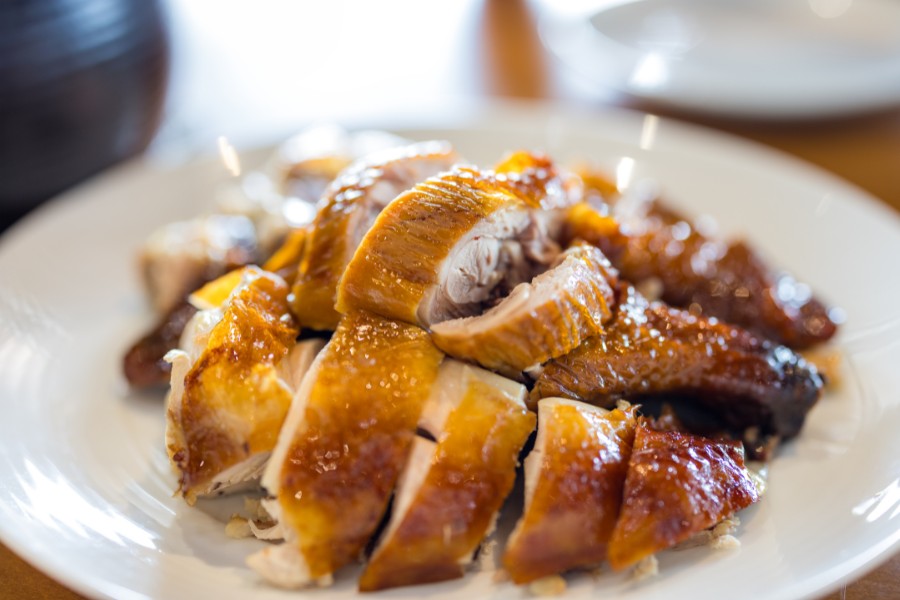
In the Canton area, chicken is a staple for celebrations, and Lunar New Year is no exception. It’s not just about the taste; in Cantonese, the word for chicken (gei, 雞) sounds similar to “family” (gaa, 家), symbolising family harmony and marital bliss. Some also believe each part of the chicken, from wings to soup, carries a specific wish for a smooth, prosperous year. For instance, chicken wings represent “spreading your wings and flying high”, symbolising work promotions or academic success.
Crispy Pastry Dumpling (油角)
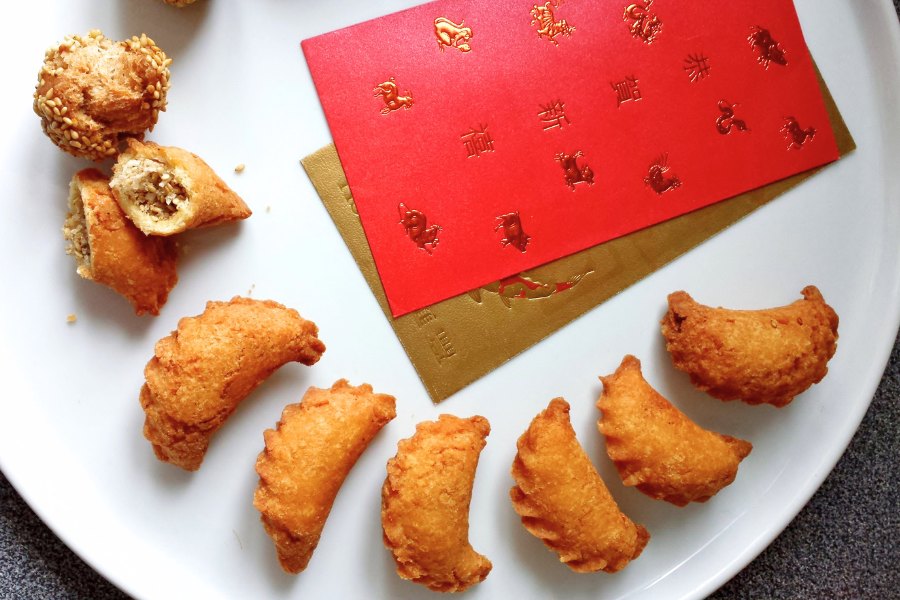
If you have to save your quota for one deep-fried food, save it for yau gok. Yau gok are deep-fried dumplings especially unique to Canton areas. They’re traditional Chinese New Year treats shaped into the historic Chinese currency of gold ingot, so it only makes sense that they have come to signify wealth and good fortune. The dumplings are made of glutinous rice dough and filled with a variety of condiments, from savoury items like minced pork and mushroom to sweet ones like peanuts and sesame paste. You can find them in miniature sizes, making them perfect Chinese New Year snacks to munch on!
Fish (魚)
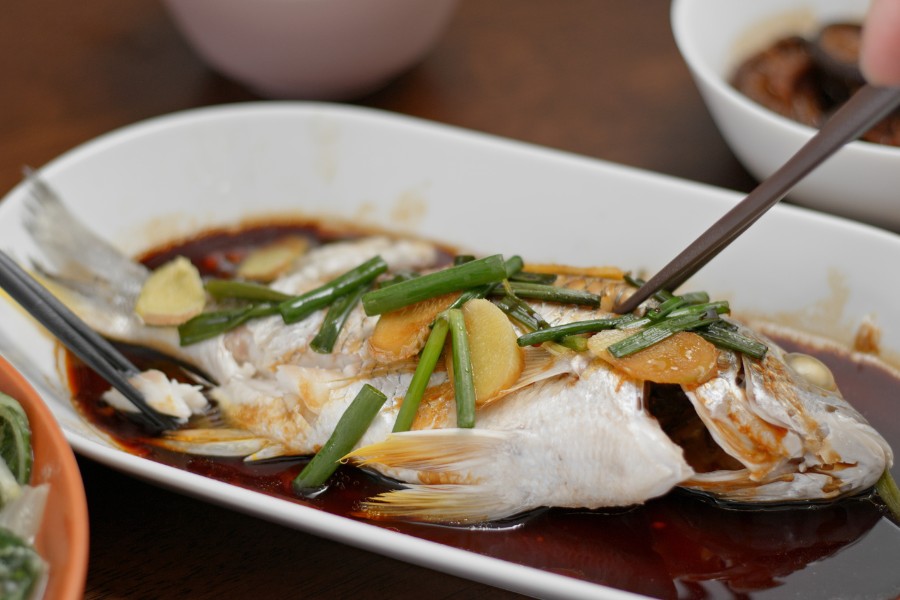
Another must-have on the Lunar New Year table is a whole fish, of any kind. In Cantonese, ‘fish’ (yu, or yú in Mandarin) resonates with ‘surplus’ (jyu or yú, 餘), promising a year filled with abundance. It’s customary to serve fish on both New Year’s Eve and the first day of the Lunar New Year. Pro tips: eat just the middle portion on New Year’s Eve and save the rest for the following day – it’s all about starting and ending the year with abundance.
Lettuce (生菜)
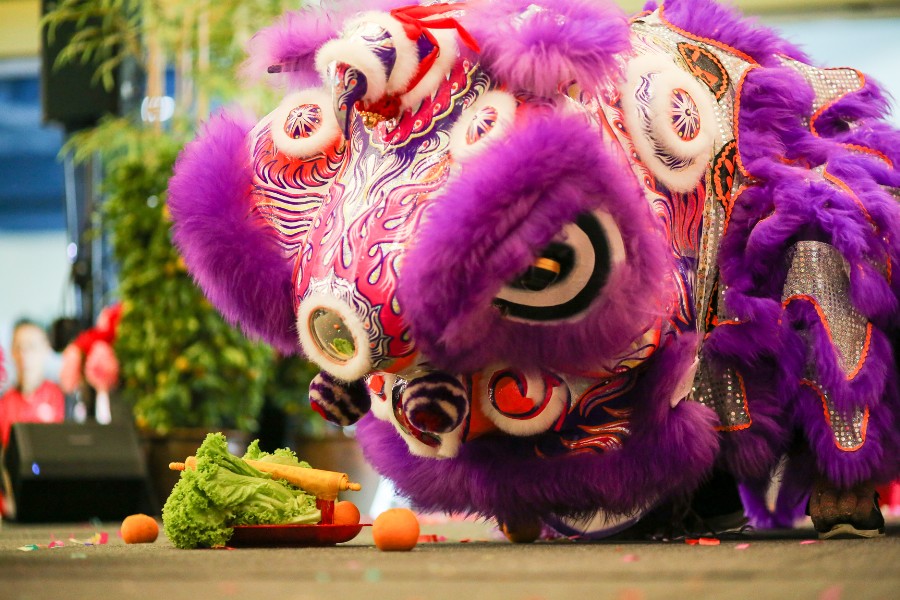
Be particular about the vegetables you eat over Chinese New Year; lettuce (saang coi or shēng cài, 生菜) is particularly auspicious as its pronunciation in Chinese suggests “creating wealth” (sanng coi or shēng cái, 生財). Enjoy it however you prefer, like the popular lettuce wrap with minced meat. Plus, It’s not just the people that eats lettuce for Lunar New Year. In lion dances, it is a tradition to offer lettuce to the lion, which ‘eats’ and then spits it back out, symbolising wealth and prosperity blessings for the new year. This tradition, known as 採青 (cai qing) or ‘picking the greens’, enriches the festive spirit with its promise of abundance.
CNY Pudding (年糕)
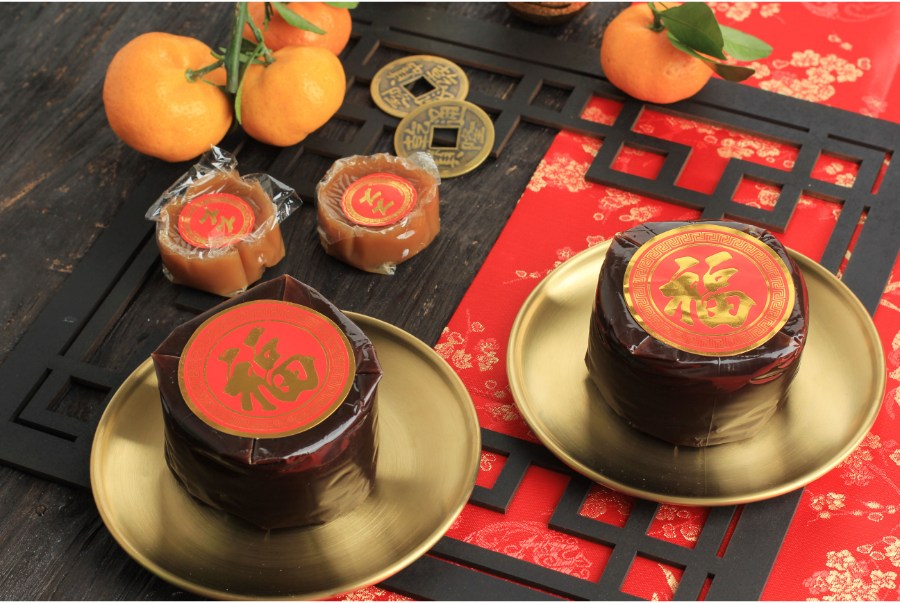
What’s sticky yet sweet and irresistible? Chinese glutinous rice cakes! Known as nin gou (or nian gao in Mandarin), these delectables are made of rice flour and brown sugar. When pronounced aloud, nin gou sounds like “year higher”, so eating this Chinese New Year cake symbolises progress, growth and advancement. It’s believed that people will elevate in life and become prosperous, whether getting promoted in their careers or advancing in their studies. With a lot of culinary innovation, salty renditions of this traditionally sweet treats are also available.
Poon choi (盆菜)
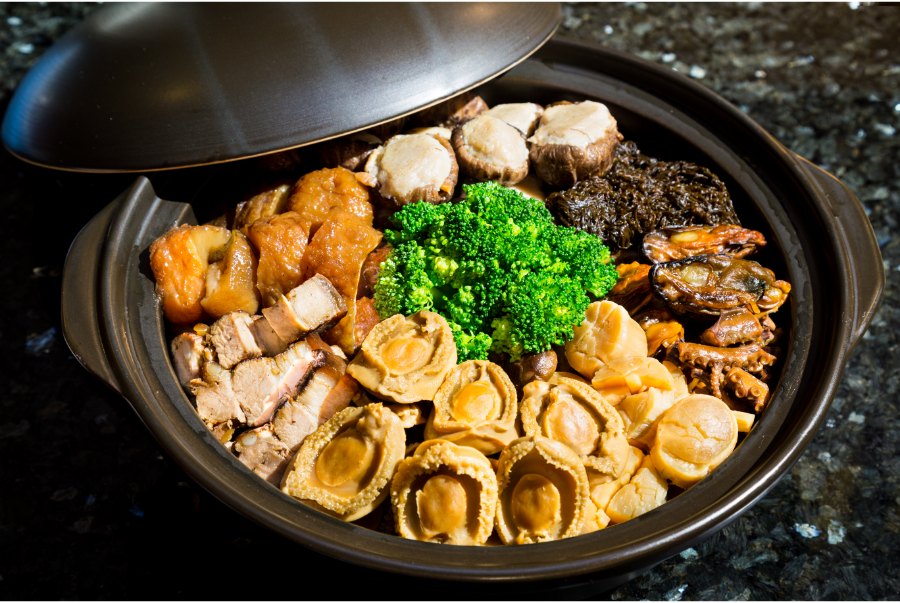
Instilling a sense of family unity and reunion are Chinese New Year dishes packed into one communal serving, better known as poon choi. Hence, poon choi represents unity, bringing people together, abundance and wealth. The clay pot or metal basin it’s normally served in is filled to the brim with heaps of different foods mostly prepared days in advance, like braised pork knuckle, abalone, dried scallops, and an assortment of vegetables. The mouthwatering flavours come together for an ultimate feast.
Prosperity Toss Salad (撈起)
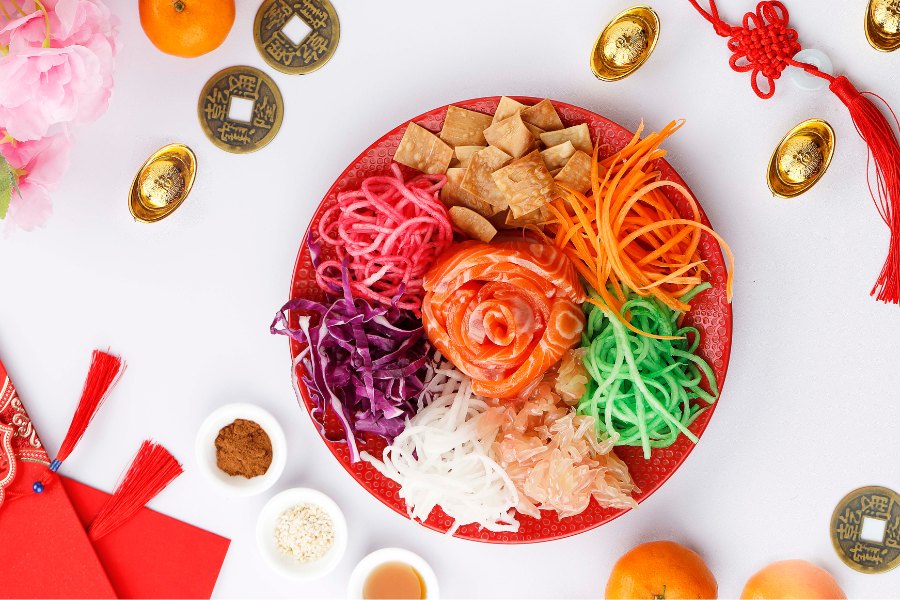
As its name suggests, Prosperity toss salad (lo hey) is symbolic of abundance and prosperity. Originating from Southern Asia, the Teochew-style raw fish salad is a Chinese New Year cuisine that features ingredients like raw salmon strips, shredded vegetables, and a mix of sauces. During the festive toss, diners stand and fling the ingredients high with chopsticks, chanting “lo hey, lo hey” (撈起, 撈起) for increased fortunes, reflecting a lively ritual of hope and celebration.
Sesame balls (煎堆)
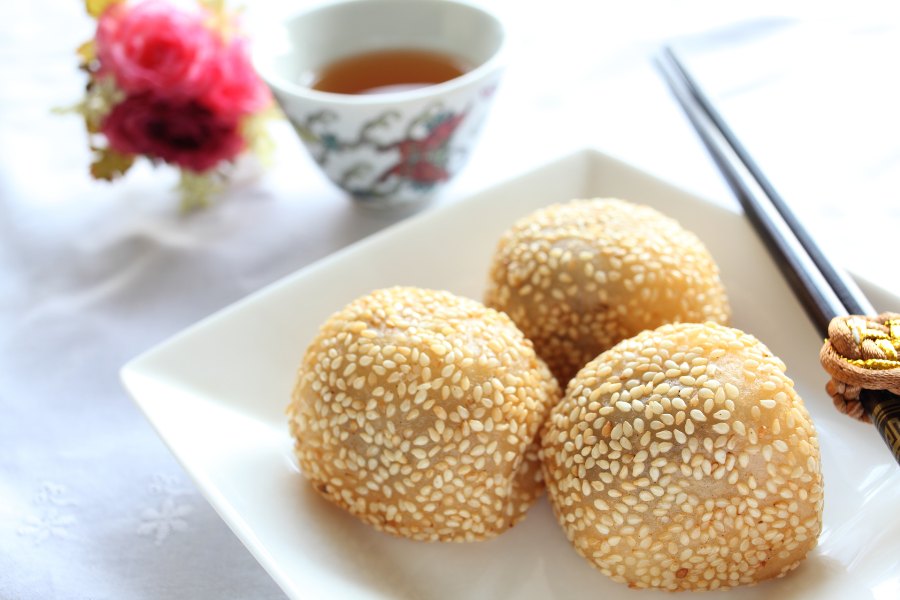
Crispy on the outside and soft and chewy on the inside are sesame balls (jin deui). These treats are made of glutinous rice flour, loaded with sweet fillings to relish like red bean and black sesame paste, that are then rolled into a ball and coated with sesame seeds and fried. In Chinese cuisine, sesame is believed to bring in good fortune and happiness (煎堆轆轆,金銀滿屋). Interestingly enough when you bite into the fried ball, a mouth shape forms in the soft treat, which has come to mean lots of laughter and happiness for the new year.
Sesame Smiling Cookie Balls (笑口棗)
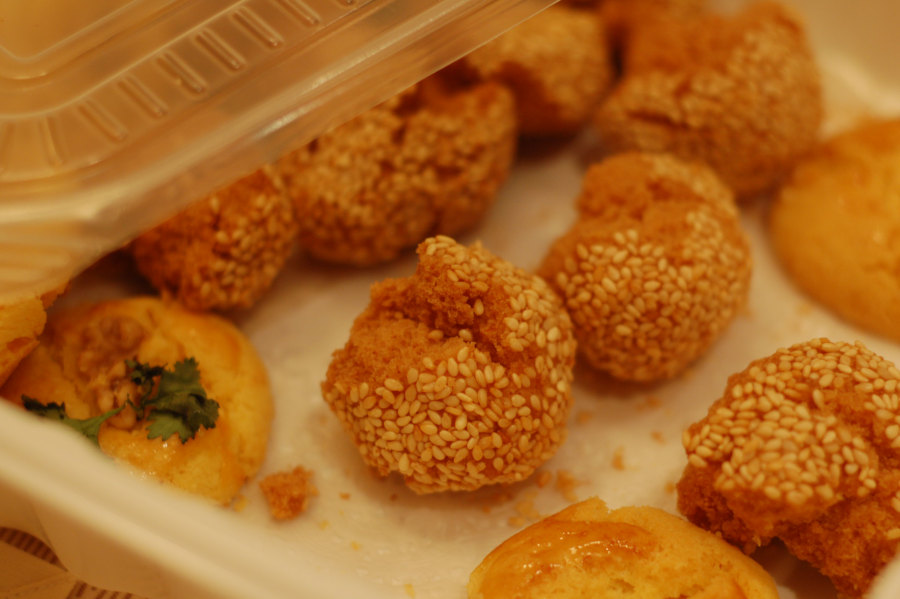
Quite similar to sesame balls are sesame cookies (siu hau jou). These are so-called “smiling cookie balls” because the dough splits open into what looks like a Pacman-esque smile when baked. Rather than being treats of joy, these traditional Chinese New Year sweets are as you would imagine cookies to be, but garnished with sesame seeds. As aforementioned, sesame represents good fortune and happiness. Eating them would bring more positivity and radiance into your life. Sesame cookies make a great gifting option when you make your rounds visiting friends and family over the Lunar New Year.
Snack Tray (全盒)
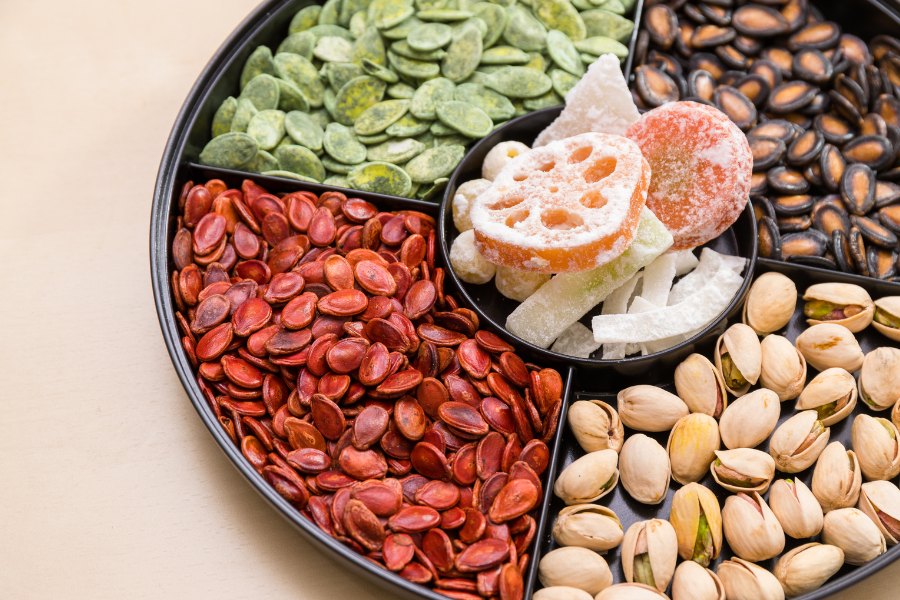
While going house to house to visit friends and family over the holiday, many would be greeted with candy tray, or cyun hap in Cantonese, which is a tray of togetherness. This tray is more of a “candy box” that’s filled with many Chinese New Year treats, like sweet lotus seeds (tong lin zi), sunflower seeds, sweet lotus roots (tong lin ngau) and sweet winter melon (tong dong gwaa). This blend of the best Chinese New Year snacks represents different meanings. For example, sunflower seeds represent having many sons and grandsons as the word seed also means children. But overall, the tray of treats symbolises good luck and fortune, and everyone sharing in the joy will live a happy, wholesome life. The shape of the box is round, enhancing the meaning of togetherness.
Sweet rice dumplings (湯圓)
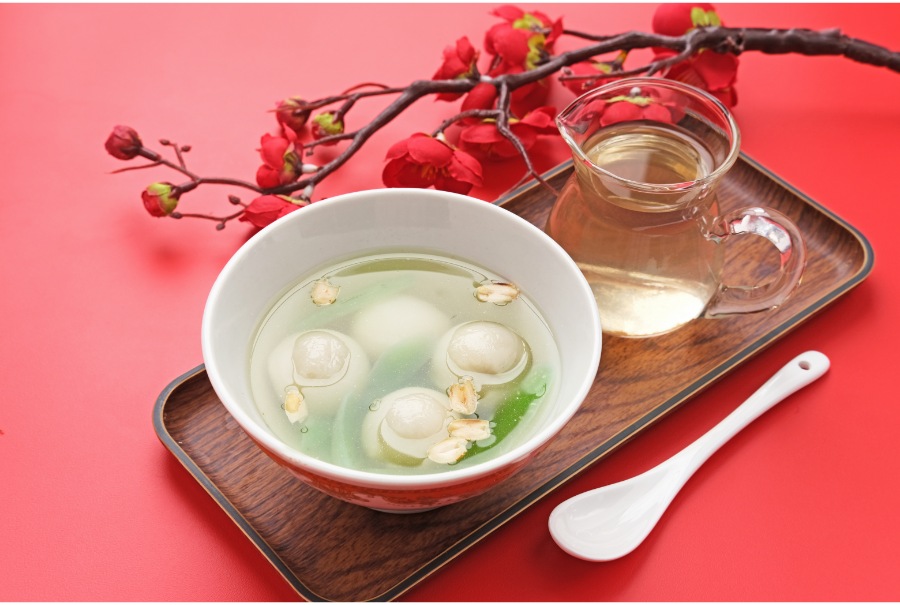
End a Chinese New Year meal with some deliciously sweet rice dumplings (tong yun, or tang yuan in Mandarin). These mochi-like dumplings are filled with a variety of mashed condiments, like peanuts and black sesame, that auspiciously mean bringing sweetness into one’s life. Their smooth, round shapes represent harmony and wholeness and bring family and friends together. Eating them with your loved ones brings happiness and good fortune in the new year. Tang yuan are perhaps the most devoured traditional Chinese New Year food for dessert.
Turnip cake (蘿蔔糕)
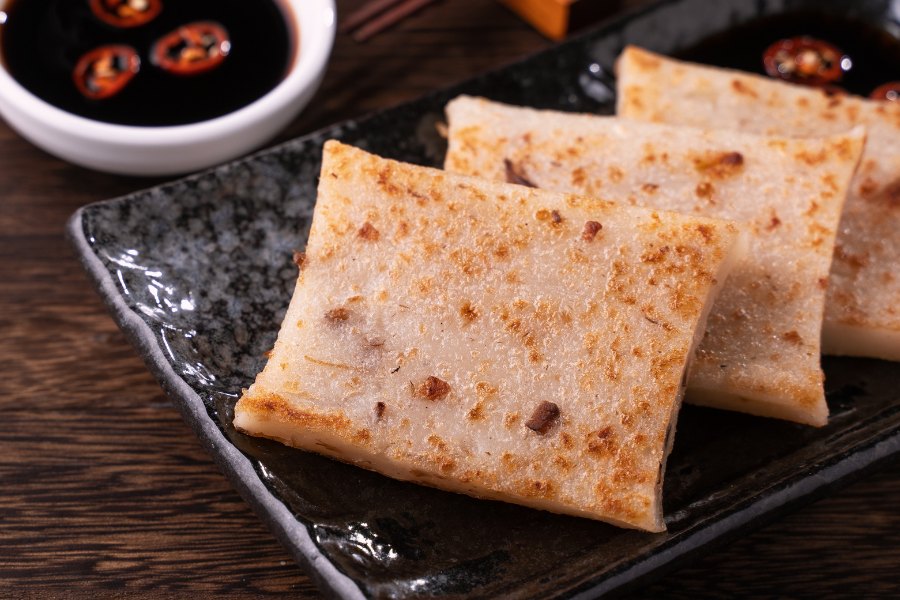
Turnip cake, a staple in Cantonese yum cha, becomes especially popular during Chinese New Year as the word for radish (choi tau 菜頭) in Hokkien is a homophone for “fortune” (coi 財). To make this dish, shred Chinese white turnip and mix with water and flour. Enhance the flavour by adding your choice of ingredients like dried shrimps, dried shiitake mushrooms, and Chinese sausage. After the mixture sets, you can pan-fry or steam it, then serving it hot with hot sauce or oyster sauce for a delightful treat.
Header image credits: Marcus Chung via Canva


